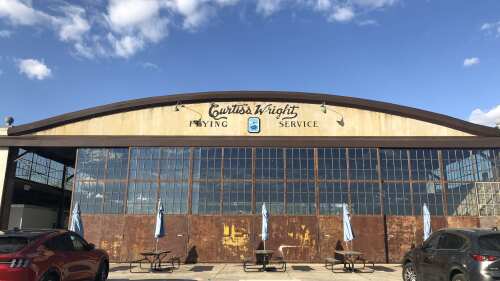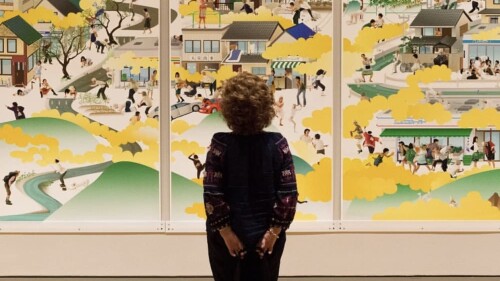By: Paul Armstrong, a long time Cola-area resident, who is now a retired IT manager, spending much of his time as an amateur historian and volunteer tour guide.
This is a contributor-submitted Voices piece. Want to join the conversation? We invite you to write for us. Learn how to share your voice here.
Was the name of one of Columbia’s original streets unofficially changed by a 1936 history book?
For nearly 150 years, what is now Devine Street was called Divine Street. Then, in the 1930s, the street signs were changed, and the name became Devine Street. This change to one of Columbia’s original streets apparently came about unofficially. No reference has been found of a city council ordinance changing the name of Divine Street to Devine Street. However, articles found in online newspaper archives from 1936 and 1937 indicate that the street signs were changed to Devine in 1936.
Helen Kohn Hennig’s book, Columbia Capital City of South Carolina, 1786-1936, was published in 1936 as part of Columbia’s Sesquicentennial celebration. The Sesquicentennial commemorated 150 years since the city’s founding in 1786. The inside front cover of the Hennig edited book displays a 1931 map by Tomlinson Engineering that claims to be a copy of the original plan from the survey used in laying out the city streets in 1786. On the map, the street’s name is spelled Devine, and there are 20th century handwritten notes in the margin of the map which state, “Devine has since been spelled in error D-i-v-i-n-e.” However, no historical document or original source that supports this misspelling claim can be found. In fact, if the name was misspelled, it was misspelled in official documents, news media, directories, and maps for over 140 years. Here are some examples.
- 1792 Act. During research for this article, the earliest written reference found to the street’s name was an act of the legislature in 1792 that spelled it Divine. This act, which authorized the sale of certain lots of land in the city, was written only six years after Columbia’s commissioners hired surveyors to lay out the streets of the new town.
- City Directories. The Columbia City Directories prior to 1939 used the spelling Divine in the street directory. Beginning in 1939, Devine has been used in the street directory.
- Legare Map. A 1915 map by Columbia City Engineer, Thomas Keith Legare, also claims to be “from a copy of the original plan from survey ordered 1786”. Legare’s map spelled it Divine.
- 19th Century Maps. Every 19th century Columbia city map found in research for this article spelled it Divine. These include a map drawn in 1850 by John B Jackson, an 1860 map by Gustavus T Berg, an 1869 map by Alex Y Lee, an 1872 bird’s-eye view map by Camille N Drie, and an 1895 map by Columbia city engineers Frank Niernsee and A G Lamotte.
- The Daily Phoenix. The Daily Phoenix was Columbia’s primary newspaper from 1865 to 1878. Every reference found in searches of the online issues of The Daily Phoenix has the name spelled as Divine.
- The State/Columbia Record. Occurrences of the spelling, Devine, have been found in the online newspaper archives as early as 1896, but that spelling of the street name is used very rarely before 1936. Prior to 1936, in fact, the spelling, Devine, for the street name was found less than 1% of the time in a combined search of The State and the Columbia Record. Since 1936, the Devine spelling has been used approximately 60% of the time in these papers.
In Columbia Capital City of South Carolina 1786-1936, the author of the first chapter states that Devine Street was “named for a citizen of the new town”. He did not cite the source of this information. That author, Alexander Samuel Salley Jr, was one of the most respected historians in the state of South Carolina for a half century. He was the secretary – and for twenty years the only employee – of the Historical Commission of South Carolina, which was later renamed as the Department of Archives and History. So, Salley’s credentials are stellar. It is just unfortunate that he did not include a source citation for his statement that the street was spelled Devine and was named for an early citizen of Columbia.
In conclusion, it seems that a map and statements in Hennig’s 1936 book made uncited claims that resulted in the change of the name of one of Columbia’s original streets. This lack of citation leaves unanswered questions about the source of the information and reason behind the claim. So far, no pre-1931 references have been found to support the claim.
One thing this amateur historian has learned is that research is never complete. Was there a citizen, family, survey employee, or another person named Devine in the early history of Columbia for whom the street was named? No source has arisen to date that provides evidence of such an individual or family. That does not mean it does not exist. There may be some letter or other document buried in a library archive collection that has not yet been found which would support the claim that the street was originally named Devine. Or it may have been someone’s assumption that somehow got accepted as fact. We simply don’t know for sure. Therefore, we must document what we do know and continue studying and researching.
Research is never complete!











